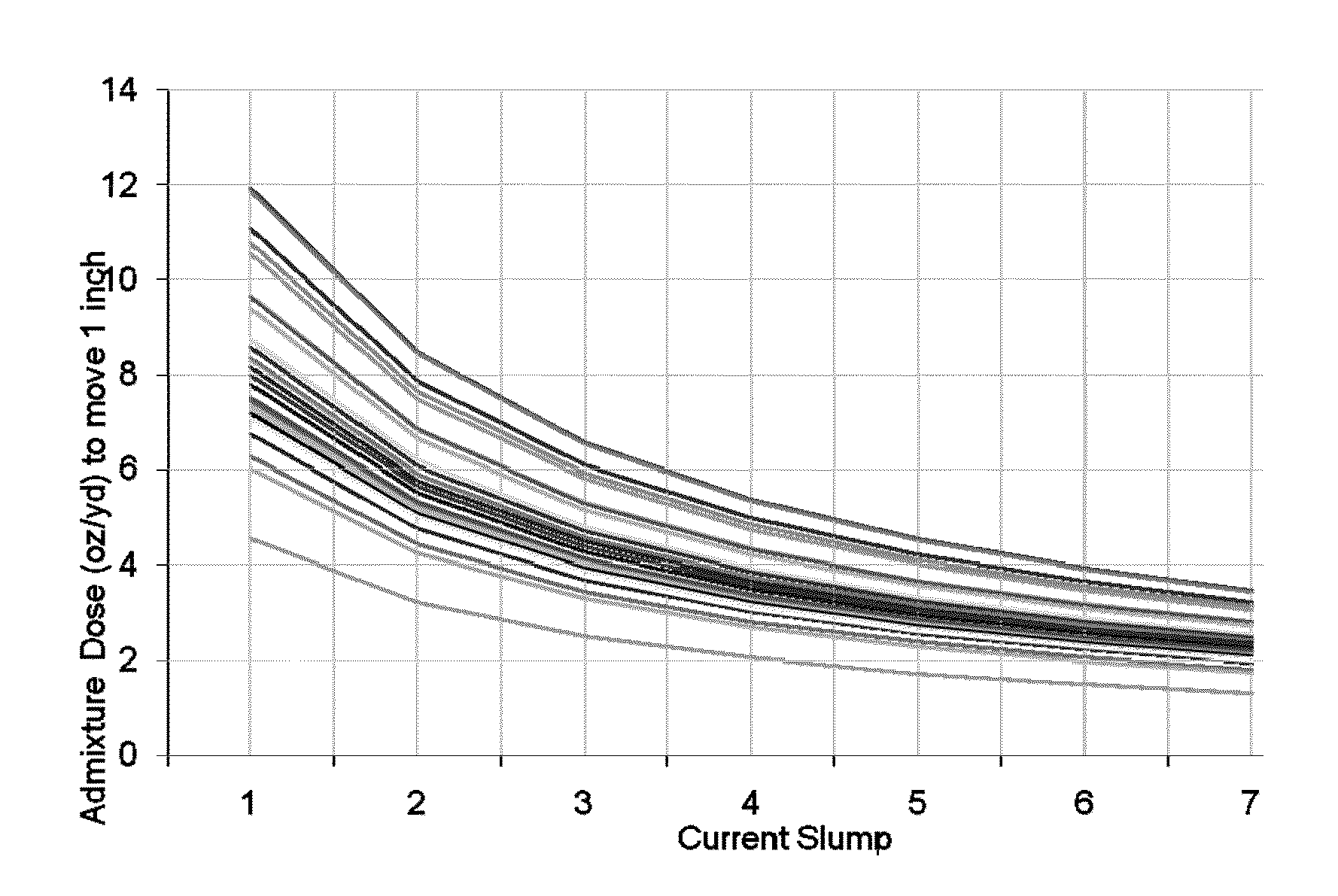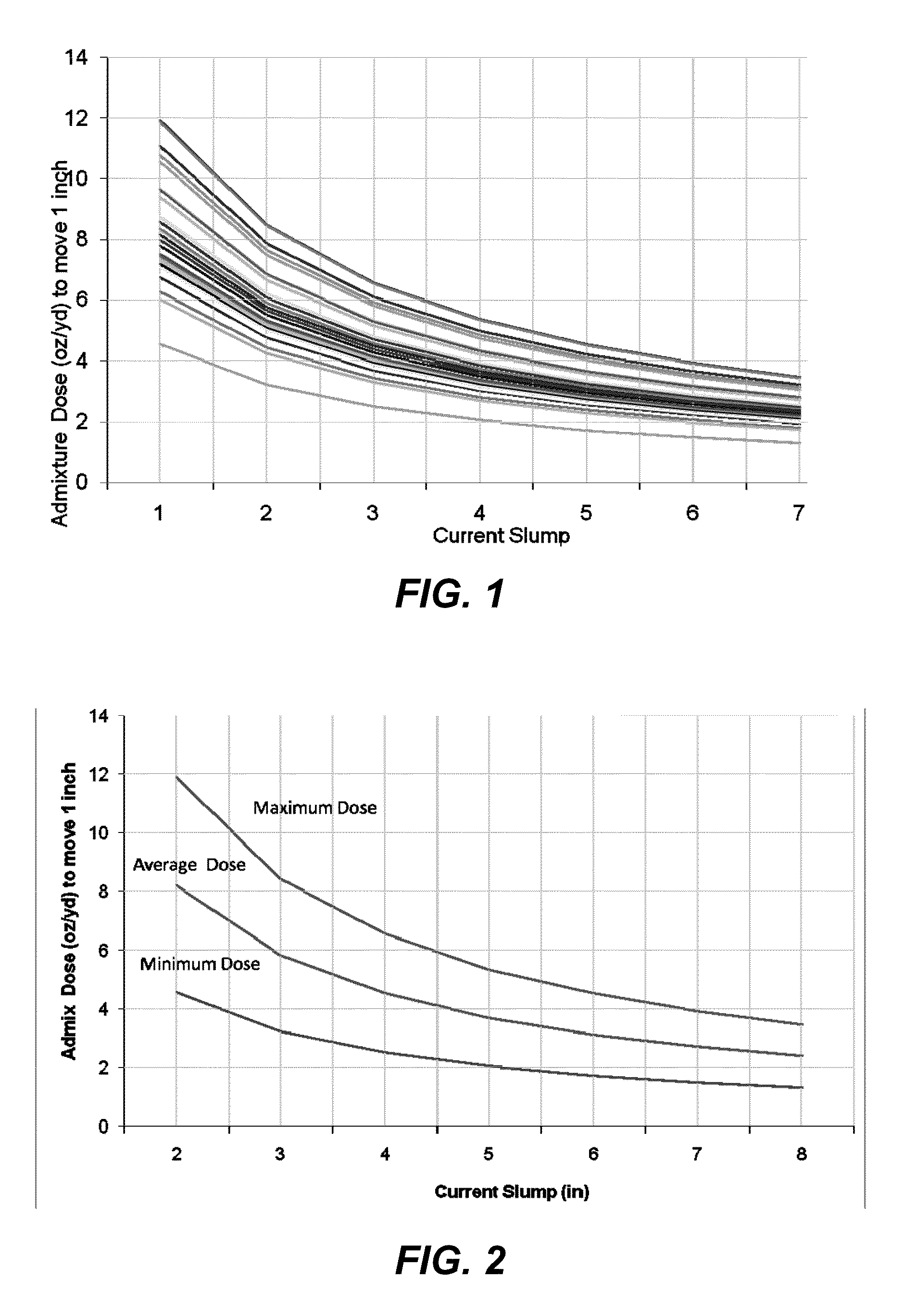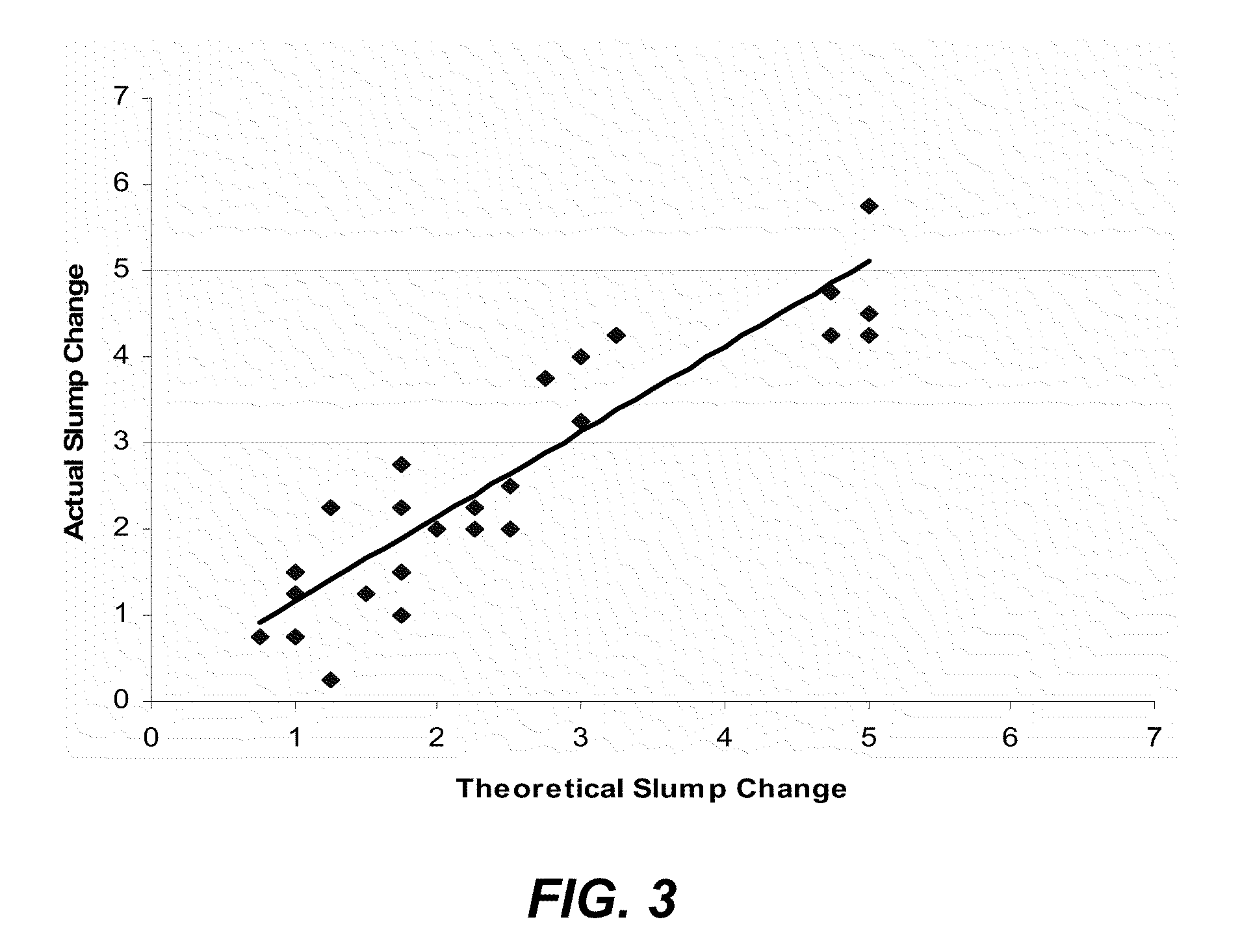Method for adjusting concrete rheology based upon nominal dose-response profile
a concrete rheology and dose response technology, applied in the field of concrete manufacturing, can solve the problem of impractically complex dose response curve development, and achieve the effect of increasing technical complexity
- Summary
- Abstract
- Description
- Claims
- Application Information
AI Technical Summary
Benefits of technology
Problems solved by technology
Method used
Image
Examples
example 1
[0076]A concrete mixture was made in a laboratory mixer without any chemical admixtures added. Slump was measured by removing samples and placing them in a slump cone in accordance with ASTM C143-05. When this test was done, the first mixture was discarded. Immediately thereafter, another concrete mixture having the same concrete mix design was made in the same laboratory mixer but this time with a chemical admixture (polycarboxylate water reducer), and slump was again measured using the same standard cone test). When this test was done, the mixture was discarded. A plurality of further successive concrete mixtures of the same concrete mix design and identical mix factors (e.g., temperature, type of cement, amount of air and water, water / cement ratio, etc.) were also made in the laboratory mixer, but each varying only in the dosage amount of the polycarboxylate polymer water reducer. Except for the admixture dose of the water reducer, all other variables were kept constant. Each suc...
example 2
[0082]The exemplary method of the invention was tested in the field using a concrete mix truck having an automated monitoring and dosing system provided by RS Solutions LLC of Ohio, commercially available under the trade name VERIFI. This monitoring system could measure slump based on hydraulic pressure and mix drum speed. This system could also inject chemical admixture in liquid form into the mix drum from a small chemical storage tank mounted on the fender. (Reference is also made to US Patent Publication 2009 / 0037026, Sostaric et al., described in the background section).
[0083]Over a period of months a variety of concrete mixes were prepared in the concrete mix truck. Prior to this testing, a nominal dose response profile was obtained, similar to the process described above in Example 1, and this was used as the reference or “nominal” reference dose (“NDR”) profile.
[0084]A number of tests were run using the exemplary method of the invention for different concrete mix delivery op...
PUM
| Property | Measurement | Unit |
|---|---|---|
| rheology | aaaaa | aaaaa |
| size | aaaaa | aaaaa |
| temperature | aaaaa | aaaaa |
Abstract
Description
Claims
Application Information
 Login to View More
Login to View More - R&D
- Intellectual Property
- Life Sciences
- Materials
- Tech Scout
- Unparalleled Data Quality
- Higher Quality Content
- 60% Fewer Hallucinations
Browse by: Latest US Patents, China's latest patents, Technical Efficacy Thesaurus, Application Domain, Technology Topic, Popular Technical Reports.
© 2025 PatSnap. All rights reserved.Legal|Privacy policy|Modern Slavery Act Transparency Statement|Sitemap|About US| Contact US: help@patsnap.com



